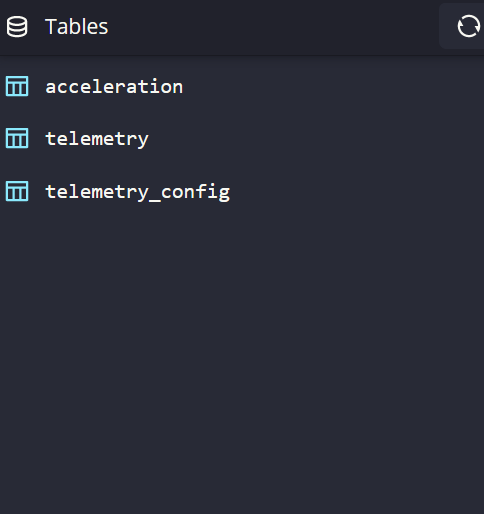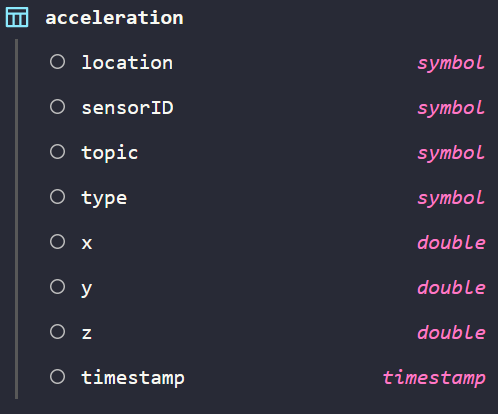Questitto: Light-weight, Blazing Fast Stack for your IoT Application
Overview
QuestDB is the fastest open-source Time-Series Database out there in terms of performance.
The developers were kind enough to welcome me into their community and I wanted to make things easier for people trying things out with QuestDB.
Lo! and behold Questitto an out-of-the-box repository for your initial IoT Applications. The repository is an altered version for my repository tiguitto which helps users deploy the highly used TIG+Mosquitto (Telegraf, InfluxDB, Grafana) + Mosquitto MQTT Broker stack in no time.
Motivation
I am really looking forward to use some SQL queries with Time-Series Databases and QuestDB provides such functionalities as well as
some cool new features of Dynamic Timestamping.
Not to mention, my staple InfluxDB’s Line Protocol is supported via sockets too!
Stack
questitto currently comes with basic user authentication support for Mosquitto MQTT broker. The Broker allows only specific users to publish / subscribe data hence reducing misuse. Telegraf writes the incoming data via subscribing to the MQTT Broker and pushes the data to QuestDB.
In order to make it easy to deploy, the stack is deployable via docker and configuration is made simple via usage of text files (MQTT broker’s users) and an Environment File (for Telegraf)
Setup
Clone the repository:
git clone https://github.com/shantanoo-desai/questitto.git && cd questitto/
Your Directory structure should look like:
├── docker-compose.yml
├── LICENSE
├── mosquitto
│ ├── config
│ │ ├── mosquitto.conf
│ │ └── passwd
│ └── data
├── questitto.env
├── README.md
└── telegraf
└── telegraf.conf
Some brief information on the files:
mosquitto/config/passwd: file that has the usernames and passwords necessary for publishing/subscribing to the MQTT brokerquestitto.env: environment variable file used bytelegrafcontainer to subscribe to the MQTT Broker for data ingestiontelegraf/telegraf.conf: TOML Configuration file for lettingtelegrafdo the heavy lifting and inserting the data into QuestDB
User Management for Mosquitto MQTT Broker
In the repository there are two users added by default (see mosquitto/config/passwd file):
pubclient:questitto
subclient:questitto
You can use the pubclient credential on your IoT Devices / MQTT Client to publish information to the Broker. Similarly, subclient credential will be used by telegraf or any other user of the stack in order to subscribe to the incoming data. Feel free to change the passwords for the usernames or add more credentials according to your needs. The format for the credential entries is as follows (in plain text):
username1:password1
username2:password2
Let’s encrypt the passwords using the following command:
# assuming your current directory is questitto
docker run -it --rm -v $(pwd)/mosquitto/config:/mosquitto/config eclipse-mosquitto mosquitto_passwd -U /mosquitto/config/passwd
The command does not return anything hence, after executing the command check the mosquitto/config/passwd file using:
cat mosquitto/config/passwd
Input Data Format + MQTT Topic Design
For IoT Applications, let the higher components in the stack do the heavy-lifting i.e.
telegrafandmosquittoand keep the payload and topics very simple
As an example the MQTT Topics are selected as follows:
IOT/<SensorID>/<measurement_name>
if your IoT sensor publishes temperature data then you can publish it to a topic:
IOT/sensor1/temp
with the payload in InfluxDB Line Protocol String:
environment,type=BME280 temp=23.9
We then let telegraf translate the location of sensor1 for us using the processors plugin and the MQTT topic itself.
Telegraf Configuration
telegraf subscribes to the MQTT Broker using the subclient credential mentioned above.
questitto.env file with the actual credentials for telegrafLet’s look at how telegraf can add our sensor’s location for us.
We use the inputs.mqtt_consumer plugin to connect to our broker and subscribe to it via the credentials in the .env file:
[[inputs.mqtt_consumer]]
servers = [ "tcp://mosquitto:1883" ]
# Topics to subscribe to:
topics = [
"IOT/+/acc",
"IOT/+/mag",
"IOT/+/gyro",
"IOT/+/temp"
]
# Telegraf will also store the topic as a tag with name `topic`
# NOTE: necessary for the Processor REGEX to extract <Sensor_ID>
topic_tag = "topic"
username = "${TG_MOSQUITTO_USERNAME}"
password = "${TG_MOSQUITTO_PASSWORD}"
# Connection timeout
connection_timeout = "30s"
# Incoming MQTT Payload from Sensor nodes is in InfluxDB Line Protocol strings
data_format = "influx"
we store the MQTT topic as a tag called topic and now leverage it for some Regular Expression and Enumeration Magic as follows:
[[processors.regex]]
order = 1
[[processors.regex.tags]]
# use the `topic` tag to extract information from the MQTT Topic
key = "topic"
# Topic: IOT/<SENSOR_ID>/<measurement>
# Extract <SENSOR_ID>
pattern = ".*/(.*)/.*"
# Replace the first occurrence
replacement = "${1}"
# Store it in tag called:
result_key = "sensorID"
[[processors.enum]]
order = 2
[[processors.enum.mapping]]
# create a mapping between extracted sensorID and some meta-data
tag = "sensorID"
dest = "location"
[processors.enum.mapping.value_mappings]
"sensor1" = "kitchen"
"sensor2" = "livingroom"
Based on our MQTT Topic design we know that the SensorID will be on the second level i.e. IOT/(.*)/#.
We perform the Regular Expression to extract the sensor’s ID and use enum to map it to its dedicated location:
sensor1 --> kitchen
sensor2 --> livingroom
The location will be stored as a tag called location.
Data Insertion to QuestDB
[[outputs.socket_writer]]
address = "tcp://questdb:9009"
will send the Line Protocol String to port 9009 of the questdb container and you don’t even need to define a schema beforehand!
Visualize It!
QuestDB comes with its own cool UI available on http://<IP_address>:9000
Example
Get the Stack up:
docker-compose up -d
As a simple Example I used MQTT.fx as a client to publish information in Line Protocol to the following Topic:
{
"topic": "IOT/sensor1/acc",
"payload": [
"accleration,type=BNO055 x=2.3,y=3.2,z=0.01",
"accleration,type=BNO055 x=2.3,y=3.2,z=0.01",
"accleration,type=BNO055 x=2.3,y=3.2,z=0.02",
]
}
with the pubclient:questitto credentials and on the QuestDB UI you can see:

Automatic Table Creation based on InfluxDB Line Protocol Measurement Name
With the location and other tags from the Line Protocol inserted:

Columns created by QuestDB for acceleration Table
A simple query where I would like to know the acceleration value in the kitchen for the X-axis is as simple as:
SELECT timestamp, x FROM acceleration
WHERE location = 'kitchen';
Nuggets
If you need to add/remove or adapt the Users or the telegraf.conf without bringing down the stack or the services within questitto simply use the SIGHUP signal for the containers.
docker kill --signal=SIGHUP mosquitto
# OR
docker kill --signal=SIGHUP telegraf
See my blog post for a detailed write up.
Repository
You can find the repository on GitHub. Please feel free to open Issues/PRs and join the QuestDB Slack Community, the developers are really helpful there!